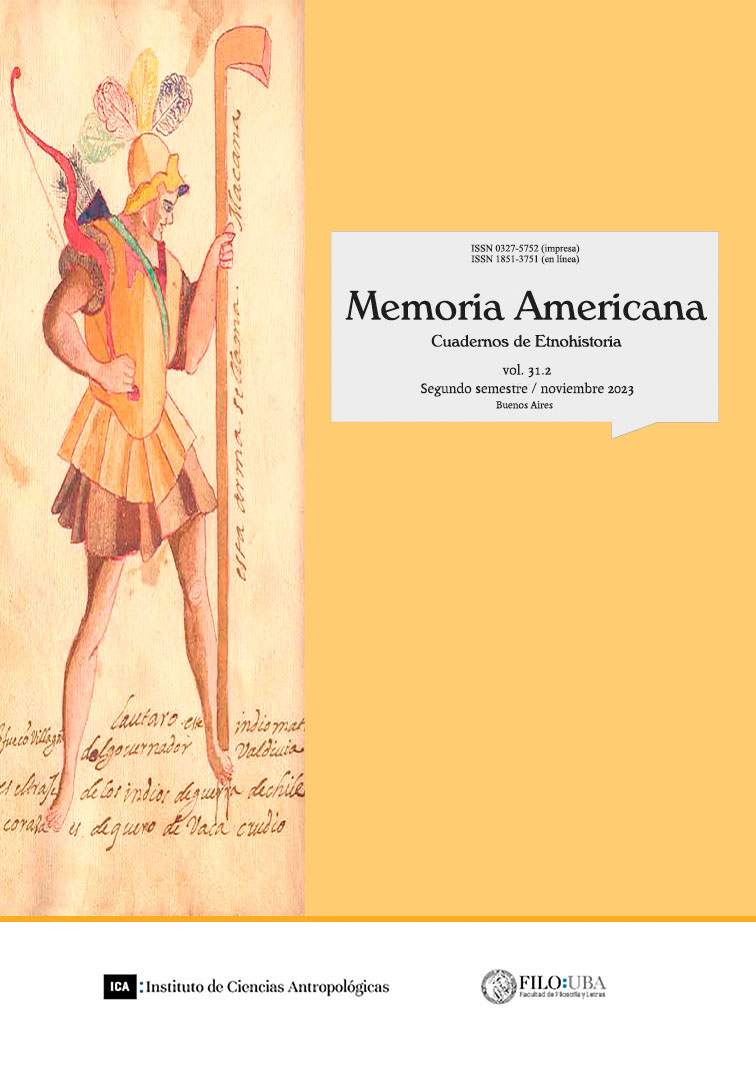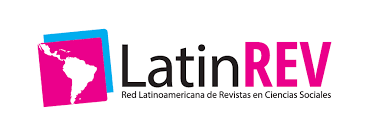Building a wealthy patrimony through notarial records and public knowledge
Abstract
In 1681 the officials of the Royal Audience of Lima seized a farm in the Magdalena Valley as part of the belongings of don Sebastián de Navarrete, accountant of Lima’s Royal Treasury, by order of the monarch. A few weeks later, the tenant and the new owner demanded its restitution, alleging that it had never belonged to the accountant but to his daughter doña Silvestra, who obtained it through a relative’s purchase and donation. The ensuing investigation to determine the estate’s ownership revealed the meticulous processthat the accountant Navarrete elaborated to justify a luxurious lifestyle, which exceded his salary. Supported by a wide circle of relatives, Navarrete forged public knowledge of a rich patrimony by using notarial records and disseminating their content, allowing him to evade questioning of his work in the royal treasury, at least temporarily.Downloads
References
Andrien, K. (1982). The Sale of Fiscal Offices and the Decline of Royal Authority in the Viceroyalty of Peru, 1633-1700. Hispanic American Historical Review 62 (1): 49-71.
Argouse, A. (2016). Razón y secreto en los registros notariales virreinales. Madrid, Lima, y Santiago de Chile (1670-1720). Historia Crítica 60: 23-41.
Brendecke, A. (2016). The empirical empire. Spanish colonial rule and the politics of knowledge. Berlin, Walter De Gruyter.
Burns, K. (2010). Into the Archive. Writing and Power in Colonial Peru. Durham, Duke University Press.
Castañeda Delgado, P. y P. Hernández Aparicio (1989). La Inquisición de Lima: 1635-1696. Madrid, Deimos. (Tomo I).
Ceballos Gómez, D. L. (2002)."Quyen tal haze talpague": Sociedad y prácticas mágicas en el Nuevo Reino de Granada. Bogotá, Ministerio de Cultura.
Dagnino, V. (1909). El Corregimiento de Arica, 1535-1784. Arica, Imprenta La Época.
De la Puente Luna, J. C. (2018). Andean cosmopolitans. Seeking justice and reward at the Spanish royal court. Austin, University of Texas Press.
Gayol, V. (2007). Laberintos de justicia. Procuradores, escribanos y oficiales de la Real Audiencia de México, 1750-181. Samora, El Colegio de Michoacán. (2 vols).
Gómez-Bravo, A. (2013). Textual agency: writing culture and social networks in fifteenth century Spain. Toronto, University of Toronto Press.
González Echevarría, R. (1990). Myth and archive. Cambridge (GB), Cambridge University Press.
Graubart, K. (2007). With our labor and sweat. Indigenous women and the formation of colonial society in Peru, 1550-1700. Stanford, Stanford University Press.
Herzog, T. (1996). Mediación, archivos y ejercicio: los escribanos de Quito (siglo XVII). Fráncfort, Vittorio Klostermann.
Horodowich, E. (2005). The gossiping tongue: oral networks, public life and political culture in early modern Venice. Renaissance Studies 19 (1): 22-45.
Jiménez Jiménez, I. (2013). “Don Alvaro de Ybarra: el Criollo más poderoso de su tiempo (1621-1675)” en Cava Mesa, B. (ed.); América en la memoria: conmemoraciones y reencuentros: 307-325. Bilbao, Universidad de Deusto, Asociación Española de Americanistas.
Jiménez Jiménez, I. (2019). Poder, redes y corrupción en Perú (1660-1705). Sevilla, Editorial Universidad de Sevilla.
Luján Muñoz, J. (1981). La Literatura notarial en España e Hispanoamérica, 1500-1820. Anuario de Estudios Americanos 28: 101-116.
McKinley, M. (2018). Fractional freedoms. Slavery, intimacy, and legal mobilization in colonial Lima, 1600-170. Cambridge, Cambridge University Press.
Mugaburu, J. de y F. de Mugaburu (1917). Diario de Lima (1640-1694) crónica de la época colonial. Lima, Sanmartí y cía.
Mumford, J. (2017). “Forgery and tambos: False document, imagined Incas, and the making of the Andean space” en Rosenmüller, Ch. (ed.); Corruption in the Iberian Empires. Greed, custom and corruption: 13-32. Albuquerque, University of New Mexico.
Phelan, J. (1960). Authority and flexibility in the Spanish imperial bureaucracy. Administrative Science Quarterly 5 (1): 47-65.
Premo, B. (2017). The enlightenment on trial. Ordinary litigants and colonialism in the Spanish empire. New York, Oxford University Press.
Rosenmüller, C. (2020). Corruption and justice in colonial Mexico, 1655-1755. Cambridge, Cambridge University Press.
Silva Prada, N. (2003). Estrategias culturales en el tumulto de 1692 en la ciudad de México: aportes para la reconstrucción de la historia de la cultura política antigua. Historia Mexicana 53 (1): 5-63.
Silva Prada, N. (2106). El tribunal de la fe censurado: prácticas rituales, pasquines y rumores contra la Inquisición Novohispana (1602-1734). Fronteras de la Historia 21 (1):148-82.
Wickham, C. (1998). Gossip and resistance among the medieval peasantry. Past & Present 160: 3-24.
Copyright (c) 2023 Memoria Americana. Cuadernos de Etnohistoria

This work is licensed under a Creative Commons Attribution-NonCommercial-ShareAlike 4.0 International License.
Los derechos de autor son cedidos a Memoria Americana. Cuadernos de Etnohistoria, no obstante los autores podrán recuperarlos y reproducir su trabajo en otros medios o formatos previo envío de solicitud al Comité Editorial. En tales casos, deberá citarse a Memoria Americana. Cuadernos de Etnohistoria como primera publicación del trabajo y el mismo queda bajo una licencia Creative Commons CC BY NC SA 3.0 Attribution- Non Commercial -ShareAlike 3.0, la cual provee libre acceso inmediato a sus contenidos pues se rige por el principio según el cual hacer disponible -en forma gratuita- la investigación al público fomenta un mayor intercambio de conocimiento a nivel global.
Los autores deberán remitir el siguiente formulario de cesión de derechos y compromiso de originalidad:
Cesión de derechos y compromiso de originalidad
Al Comité Editorial de Memoria Americana, Cuadernos de Etnohistoria
Por la presente declaro ser el autor del trabajo titulado (nombre del artículo), el mismo es original y propio y no ha sido publicado en ningún formato o soporte con anterioridad.
En caso de ser aceptado para su publicación en Memoria Americana. Cuadernos de Etnohistoria (número/año) cedo los derechos editoriales que me corresponden por el aludido artículo para su publicación en todos los formatos que posea la mencionada revista.
Si quisiera publicar este artículo a través de otro editor o en otro lugar me comprometo a solicitar el correspondiente permiso por escrito al Comité Editorial de Memoria Americana. Cuadernos de Etnohistoria. De ser afirmativa la respuesta del Comité Editorial me comprometo a lo siguiente:
- especificar lugar, editorial y fecha de la primera publicación del artículo en la nueva publicación
- realizar esta republicación sólo luego de transcurridos un año calendario desde la fecha de la presente nota de cesión de derechos
FIRMA
Aclaración











